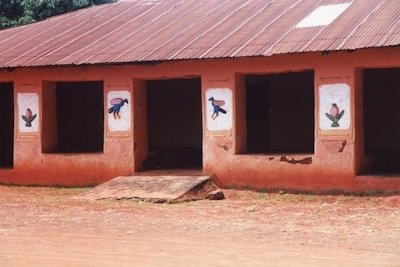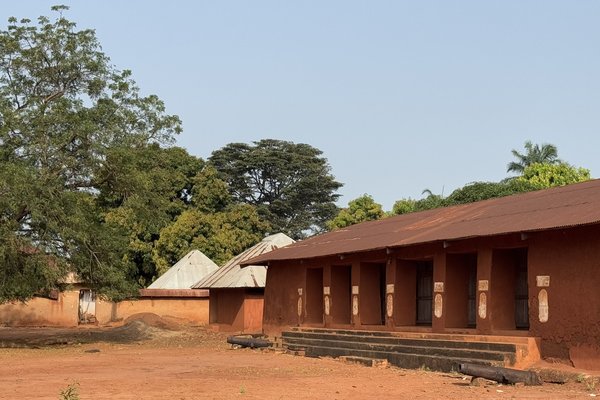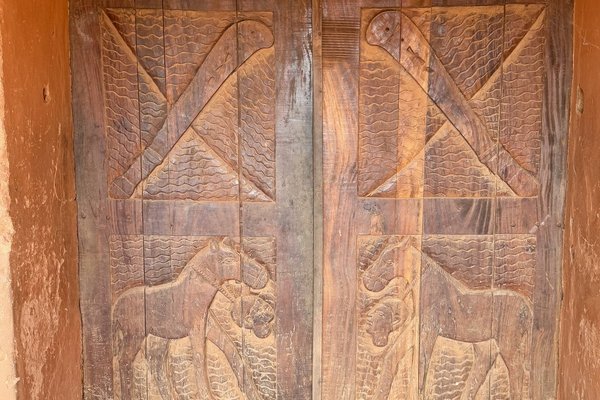Benin
Royal Palaces of Abomey
The Royal Palaces of Abomey testify to the power of those who ruled the Kingdom of Dahomey, one of the most powerful in West Africa.
The site consists of several former palaces (one for each successive king) within the same enclosure in the center of Abomey and one palace a few km away. These palaces were the political centers of their time and also stored the treasures of the kingdom. They were made with traditional earthen materials and decorated with polychrome bas-reliefs.
Community Perspective: inside the complex, you will find the best polychrome bas-reliefs. The tombs and museum are also interesting to visit. Solivagant’s review tells more about the history of the Fon of Dahomey.
Site Info
Official Information
- Full Name
- Royal Palaces of Abomey (ID: 323)
- Country
- Benin
- Status
-
Inscribed 1985
Site history
History of Royal Palaces of Abomey
- 2007: Removed from Danger list
- Completed almost all corrective measures
- 1985: In Danger
- considerable damage caused by the 1984 tornado
- 1985: Inscribed
- Inscribed
- Type
- Cultural
- Criteria
- iii
- iv
Links
- UNESCO
- whc.unesco.org
- Related
-
- epa-prema.net — Musée Historique d'Abomey
- getty.edu — Royal Bas-Reliefs of Abomey (1992-1997) conservation project
All Links
UNESCO.org
- whc.unesco.org — whc.unesco.org/
Related Resources
- epa-prema.net — Musée Historique d'Abomey
- getty.edu — Royal Bas-Reliefs of Abomey (1992-1997) conservation project
News Article
- June 21, 2024 livescience.com — Royal tomb in Benin has traces of human blood on its walls, hinting at human sacrifice
- Oct. 9, 2021 reuters.com — France to give Abomey Palace artefacts back to Benin
- Jan. 20, 2015 whc.unesco.org — On 14 January 2015, a fire has once again ravaged the Palace of the King Houégbadja in the Royal Palaces of Abomey
- Feb. 19, 2009 whc.unesco.org — Devastating fire at the Royal Palaces of Abomey
Community Information
- Community Category
- Secular structure: Palace
Travel Information
Recent Connections
-
Built in the 19th Century
Among the palaces surviving after the d… -
World Monuments Watch (past)
Royal Palaces (1998, 1996) -
Thrones
Throne of Skulls King GhezoSee www.gett…
Connections of Royal Palaces of Abomey
- Individual People
- Trivia
-
-
Role of Women
In the 18th century King Agadja of Abomey created a regiment of female guards. Later they became active warriers and fought the French who likened them to the "Amazons". They are portrayed on some of the palace bas-reliefs -
Total Solar Eclipse since Inscription
29 March, 2006 -
Preservation assisted by Getty Trust
Palace Bas Reliefs (1992-7)
-
- History
-
-
Located in a Former Capital
Abomey - Capital of the Dahomey Kingdom 1625-1892 -
African Kingdoms
Kingdom of Dahomey (c1600 - 1904)See en.wikipedia.org
-
- Architecture
- Damaged
-
-
Destroyed during invasion
Abomey - destroyed during the French invasion in 1892 -
Cultural sites damaged by fire since inscription
Devastating fire on 21 January 2009 at the Royal Palaces of Abomey. And another one on 14 January 2015See whc.unesco.org
-
- World Heritage Process
-
-
Perfect Inscriptions
1985 -
Directly in Danger
After Tornado Mar 15 1984 - normal procedure after that -
First inscriptions
Benin 1985 -
Former In Danger List sites
1985-2007
-
- Human Activity
-
-
Human Sacrifice
Described in 1864 first-hand by Richard Burton in "A mission to Gelele King of Dahome with notices of the so called "Amazons", the grand customs, the yearly customs, the human sacrifices, the present state of the slave trade and the negro's place in nature. -
Slavery
The Dahomey kings captured people both to sell on as to the Trans-Atlantic slave trade and to keep as their own slaves
-
- Constructions
-
-
Dynastic Burial Places
Includes the royal tcmbs of Tegbessou (1728-1774), Kpengla (1774-1789) and Agouglo (1789-1797) -
Thrones
Throne of Skulls King Ghezo
-
- WHS on Other Lists
-
-
World Monuments Watch (past)
Royal Palaces (1998, 1996)
-
- Timeline
-
-
Built in the 19th Century
Among the palaces surviving after the destruction of another 10 in the invasion of 1894 are those of Kings Ghezo (1818-58), Gl?l? (1858-89) and Behanzin (1889- 1894)
-
News
- livescience.com 06/21/2024
- Royal tomb in Benin has traces of …
- reuters.com 10/09/2021
- France to give Abomey Palace artef…
- whc.unesco.org 01/20/2015
- On 14 January 2015, a fire has onc…
Recent Visitors
Visitors of Royal Palaces of Abomey
- Adrian Turtschi
- A. Mehmet Haksever
- Andrew0181
- Artur Anuszewski
- Ask Gudmundsen
- Bill Maurmann
- Bram de Bruin
- Christravelblog
- David Aaronson
- edstar500
- Emili Xaus
- Iain Jackson
- Janos
- jonathanfr
- La Concy
- Loic Pedras
- Luis Filipe Gaspar
- Maja
- marcel staron
- Michael Ayers
- Michael Novins
- Mikko
- Morodhi
- Paul Schofield
- Philipp Leu
- Pink Bunny
- Piotr Wasil
- Reza
- Roger Ourset
- Solivagant
- Stanislaw Warwas
- Szucs Tamas
- Thomas Buechler
- Thomas van der Walt
- Vanessa Buechler
- Weecheng
- Westwards
Community Reviews
Show full reviews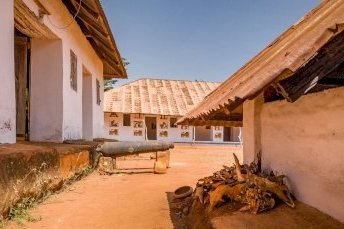
The Royal Palaces of Abomey certainly were a highlight of my road trip in Benin. I did read about the "no photo" policy but with the help of a few Benin Francs that policy was abandoned very fast. Not with a big camera but with the iPhone I was allowed. Perfect, as the phones make good photos anyway these days.
The palaces are well restored (late 2019) and still some reconstruction was going on. Mainly restoring of the tatched roofs. A visit gives a good look into the Africa before the Europeans came. The tombs are also interesting to visit. The museum has relics from all the kings on display and also shows the history of the kingdoms. There are actually still kings in Benin today but, except some rule over the local community, they have not much to say.
The site is easily combined with a visit to the subterrean housing about 45 minutes away (Village souterrain d'Agongointo-Zoungoudo). A day trip from Cotonou can easily be arranged.
Keep reading 0 comments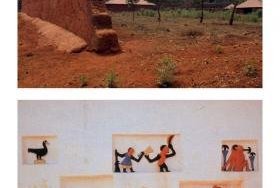
This site provides a sense of the scale and nature of some West African Kingdoms prior to colonial rule. Forget any Europe or Asia-based preconceptions about what the word “Palace” implies and you could find a visit an interesting entree to the region’s history.
What remains is a large complex of 2 palaces – those of the 19th century Kings Ghezo and Glélé who were the 9th and 10th kings of Dahomey (Another 10 palaces were destroyed during the French defeat of the monarchy in the 1890s). The complex consists of large interlinked courtyards each surrounded by rather ordinary single story mud-brick buildings with “tin roofs” (originally of course they would have been thatched) and contains also a few separated structures which were/are tombs and temples. The whole is contained within impressively high walls (legend has it that they were partly made from human blood). Many of the buildings now act as rooms for the National Museum and contain a reasonably interesting range of artefacts relating to the monarchy of Dahomey whose period of greatness spanned the 17th to the 19th centuries (A throne mounted on skulls is particularly memorable!).
The size and strength of the palaces reflects the fact that the Fon of Dahomey were powerful regionally and highly militaristic under an absolute monarchy which owned everything and everybody! The Kingdom had a regiment of all-female warriers – the “Dahomey Amazons”, whose supposed “savagery” was the stuff of French legend as partial justification for their African expansion. Their wealth …
Keep reading 0 comments
